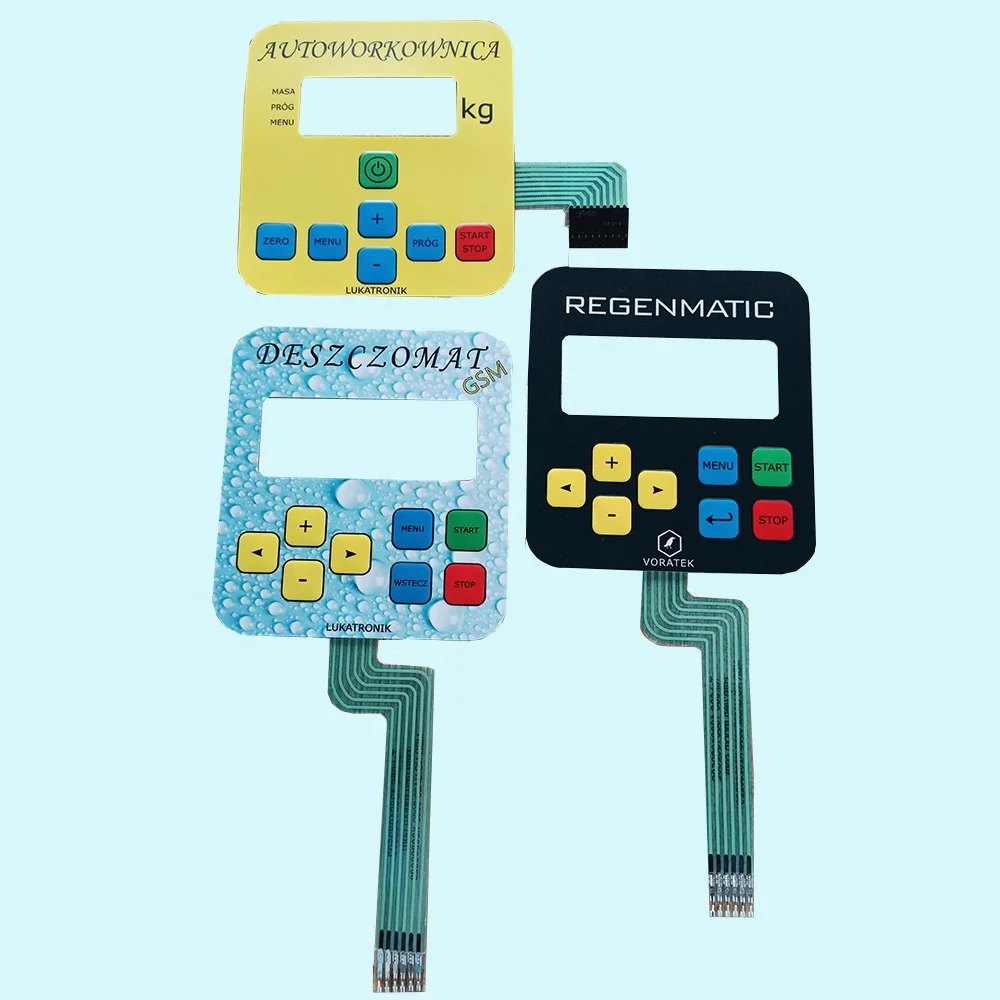The Role of Membrane Switches in Enhancing Device Functionality
The Role of Membrane Switches in Enhancing Device Functionality
Blog Article
Recognizing Membrane Switches Over: The Trick to Sturdy and Trustworthy Controls

What Are Membrane Switches?
Membrane switches are an advanced remedy in the world of interface modern technology, integrating functionality and style perfectly. These tools work as an interface in between customers and electronic systems, incorporating numerous elements right into a portable layout. Typically constructed from flexible, thin layers of materials, membrane buttons are designed to react to touch, enabling individuals to engage with equipment and digital gadgets efficiently.
The main aspects of a membrane switch consist of a published circuit layer, visuals overlay, and a spacer layer that stops unintentional activation. The graphic overlay can be customized to reflect brand name identification or individual preferences, enhancing looks while making sure functionality. Membrane buttons are generally used in different applications, including clinical gadgets, consumer electronics, and commercial devices, owing to their sturdiness and resistance to environmental factors such as dampness and dirt.
One of the vital benefits of membrane buttons is their capability to withstand damage, making them suitable for high-traffic environments. In addition, they are light-weight and require marginal area, permitting cutting-edge designs in item advancement. Overall, membrane layer switches stand for a effective and practical selection for contemporary digital interfaces, weding innovation with user-centric design concepts.
How Membrane Layer Switches Job
The operation of membrane changes joints on a simple yet efficient system that converts user input into electronic signals. When an individual presses the button, the leading layer deforms, allowing a conductive aspect in the circuit layer to make call with an equivalent conductive pad on the bottom of the visuals overlay.
The design of membrane switches can vary, however they commonly include domes or responsive elements to provide responses to the customer, boosting the overall experience - membrane switch. The materials used in membrane switches, such as polyester or polycarbonate, contribute to their sturdiness and resistance to ecological aspects, consisting of wetness and dirt. In addition, the published circuits are commonly enveloped, which shields them from damage with time.
Advantages of Membrane Layer Switches

Furthermore, membrane layer buttons are recognized for their sturdiness. Created from durable products, they are resistant official website to dust, moisture, and physical wear, which substantially prolongs their lifespan compared to conventional mechanical switches. This sturdiness makes them especially appropriate for high-traffic atmospheres and applications needing durability.
One more significant benefit is the ease of cleansing and upkeep. The smooth surface area of membrane layer changes reduces dust accumulation and is typically unsusceptible spills, making them optimal for settings that require frequent sanitization.
In addition, membrane layer switches offer a streamlined account, causing a thinner style that can be integrated right into numerous gadgets without adding mass. This attribute not only enhances the visual charm but also adds to a much more ergonomic product layout.
Applications of Membrane Switches
Functional and easy to use, membrane buttons discover applications across a vast variety of industries, consisting of medical tools, consumer electronics, and commercial equipment. In the clinical field, these buttons are important to devices such as analysis devices, patient surveillance systems, and infusion pumps, where integrity and ease of cleansing are crucial. Their capacity to keep and withstand extreme atmospheres capability makes them optimal for such applications.

In consumer electronic devices, membrane switches are made use of in items like microwaves, washing see post makers, and remote controls - membrane switch. Their smooth layout enables instinctive individual interfaces, improving the general customer experience while supplying resilience and resistance to damage
Industrial devices additionally profits from membrane switches, especially in control panels for equipment and automation systems. These buttons supply protection against dust and wetness, making certain regular performance in challenging atmospheres. Moreover, their personalized attributes allow manufacturers to tailor them to particular operational requirements, improving effectiveness and performance.
Selecting the Right Membrane Change
When picking a membrane layer button, it is vital to take into consideration different aspects that influence performance and viability for details applications. The key site here factors to consider include environmental conditions, responsive comments, sturdiness, and style specifications.
First, assess the operating setting; buttons subjected to moisture, chemicals, or extreme temperature levels call for particular materials to make certain long life and performance. Next, review the requirement for tactile responses. Depending upon user communication, some applications might take advantage of a responsive reaction to confirm activation, while others might choose a non-tactile layout for aesthetic reasons.
Longevity is one more crucial variable; membrane buttons must be designed to hold up against regular usage, effects, and abrasion. Make certain the chosen button can withstand the anticipated lifecycle, especially in high-usage circumstances.

Verdict
In verdict, membrane switches over work as crucial elements in the design of trusted and long lasting control systems across numerous markets. Their portable style, combined with durable construction and personalized functions, boosts individual communication while making sure longevity in requiring environments. The adaptability of membrane changes enables tailored remedies that satisfy details operational demands, reinforcing their relevance in modern-day technology. As sectors remain to progress, the relevance of integrating efficient membrane layer switch options can not be overemphasized.
Membrane switches represent an important facet of modern-day user interface layout, blending functionality with resilience in various applications.Membrane switches are an advanced service in the realm of individual interface innovation, integrating performance and style effortlessly. Commonly created from adaptable, slim layers of products, membrane layer buttons are created to react to touch, allowing individuals to communicate with machinery and electronic devices effectively.
The layout of membrane layer buttons can vary, however they frequently incorporate domes or tactile elements to give responses to the individual, improving the overall experience.In conclusion, membrane switches over offer as necessary elements in the design of durable and reliable control systems throughout numerous markets.
Report this page